Sunday, May 1, 2022
Bowmanville Creek has a long history of industrial use but has lately been converted into an area full of walking trails. I parked in a small parking lot on the north side of Baseline Road West near Hunt Street to check out the newly opened Bowmanville Valley Trail Extension. While the main trail heads north along Bowmanville Creek, I took the one that follows the creek south toward the 401. I wanted to check out the new section as well as the old railway bridge from the former Goodyear Plant that carried a spur line to the Canadian National line below the highway.

Charles Goodyear discovered the process for vulcanization of rubber in 1839. This process uses sulfur to harden natural rubber into various products. As the automotive age was dawning, a company was founded in Akron, Ohio in 1898 which was called The Goodyear Tire & Rubber Company. By 1907 they had a contract with Henry Ford to provide tires for the Model T. In 1910 they bought a rubber company in Bowmanville and expanded their manufacturing outside of the United States for the first time. The old postcard image below shows the plant in its early days.
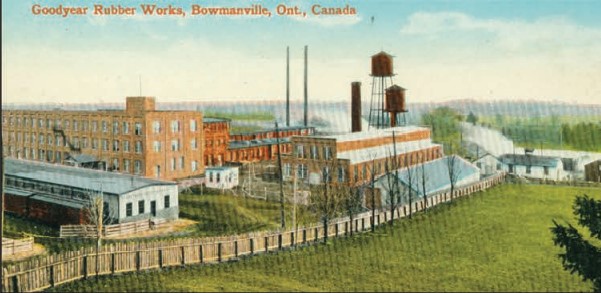
Goodyear built a spur line down Hunt Street to connect to the CN railway into Toronto. The line was still in use in 1982 when the abutments were replaced but by 2000 it was abandoned. The tracks were soon removed and the portion of Hunt Street where the rail lines ran has been repaved, hiding all evidence of its route. The steel bridge remained in place until the Bowmanville Valley Trail Extension was developed at which time it was removed.
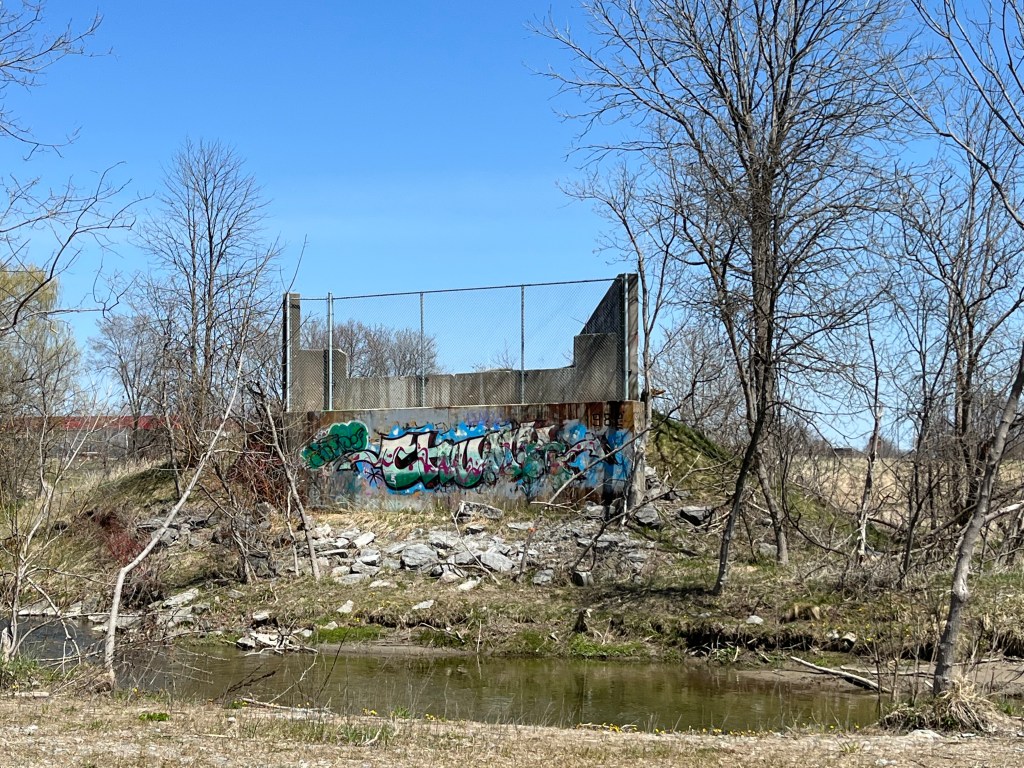
Returning to Baseline Road I crossed the creek and followed the former right of way for the spur line until I came to the foundations for the bridge.
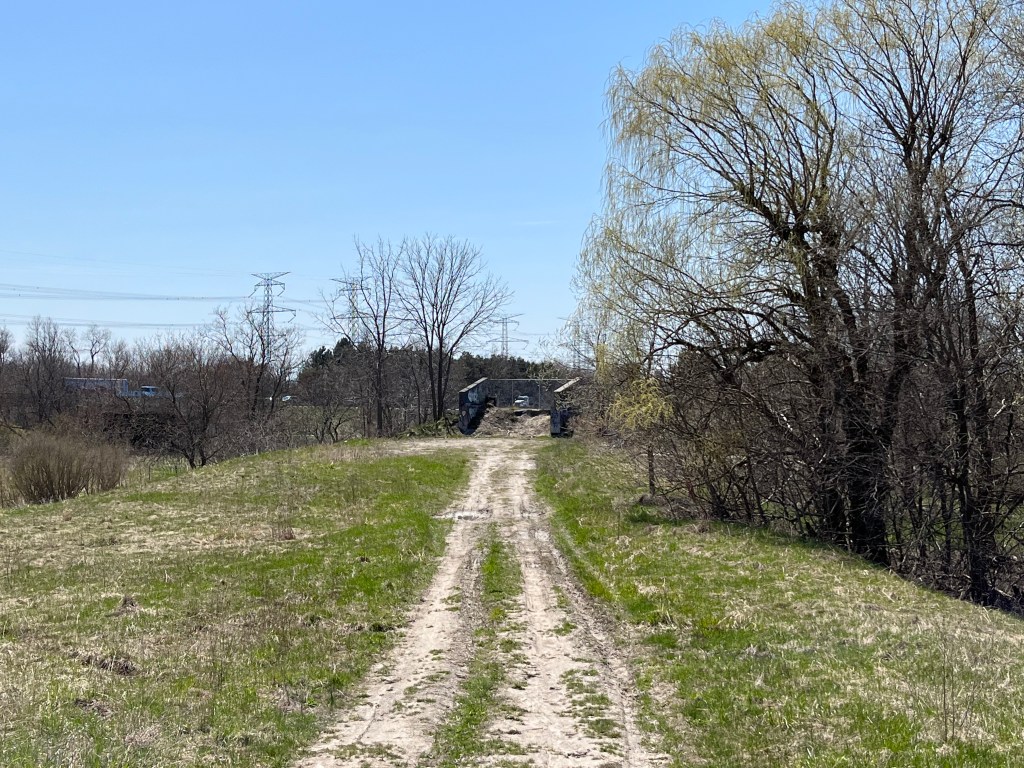
There’s not much to see from this end and looking across the creek there’s no indication of the location of the other abutment as it was removed to put the trail through. Graffiti artists have been at work on the remaining concrete and it has been painted on almost every surface.

The Bowmanville Rubber Company had started on King Street in 1898 and after changing names to the Durham Rubber Company they moved beside Bowmanville Creek in 1905. The location was chosen because it provided access to the creek to dispose of their process wastes! In those days it was believed that the solution to waste was to dilute it with running water. No wonder every water source in the area was polluted in the 19th and early 20th century.

Goodyear built additional buildings on the site and greatly expanded the business by connecting it to markets with the rail line.
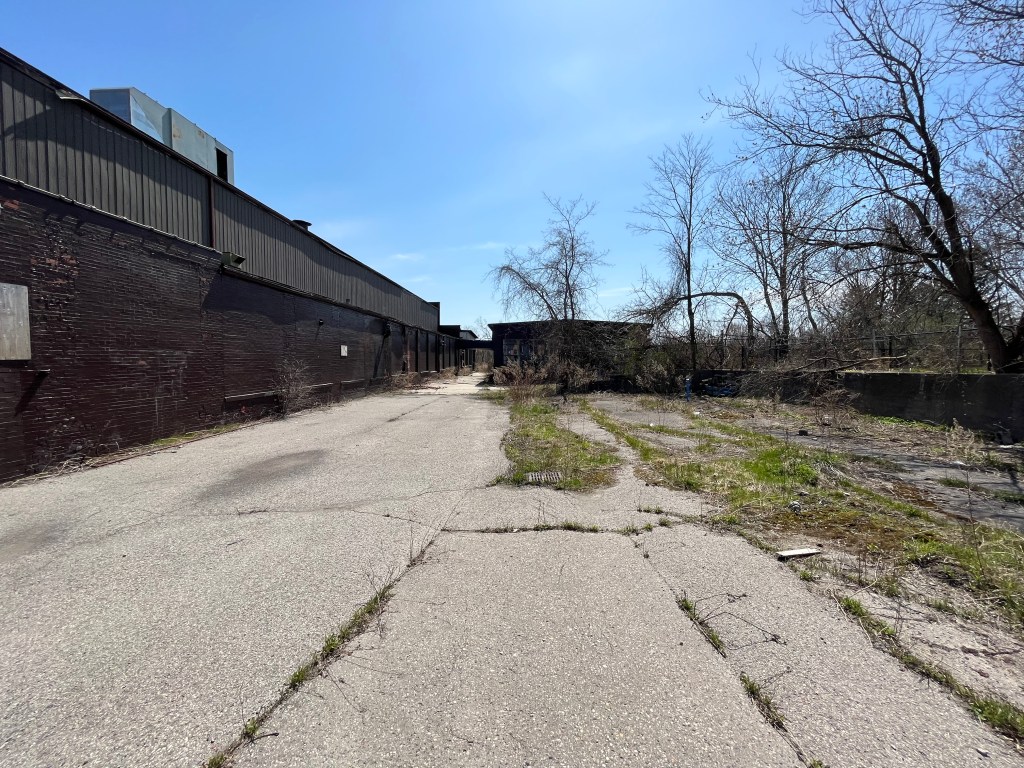
The plant operated under several names over its year history of over 100 years. After Goodyear, it became Veyance Technologies and later ContiTech Continental. Under the latest name it produced conveyor belts for the mining, tar sands and coal sectors. With the downturn of operations for many of its customers, the plant closed in 2016. Today the building sits empty awaiting its destiny, most likely demolition for the construction of a subdivision.
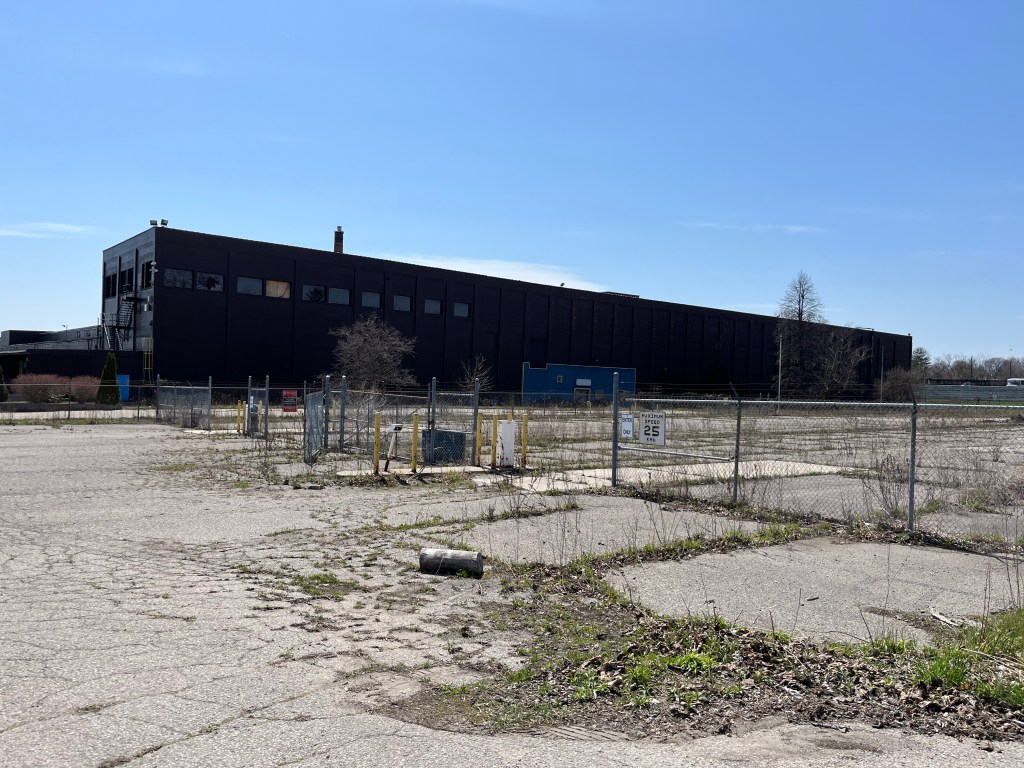
There’s lots more to explore along Bowmanville Creek and another trip will likely happen in the near future to see what lies along the trail to the north.
For a listing of our 50 most popular stories check out Back Tracks
Google Maps link: Bowmanville Goodyear Plant
Like us at http://www.facebook.com/hikingthegta
Follow us at http://www.hikingthegta.com
Also, look for us on Instagram

That rail spur used to cross the 401 on a level crossing! The overpass was asses in 1982 to eliminate the level crossing, as it was hazardous to use.
I think the rail line always went under the 401. This bridge crosses Bowmanville Creek.
It produced conveyor belts while it was Goodyear, Downturn had nothing to do with it closing, and it will be 100s of millions of dollars just in cleanup due to the things buried on that property that I doubt it will ever be available as a use for a subdivision.
When the rail line was diverted from the grade crossing in 1982 it ran west over the creek and then crossed over the 401. The embankment south of the 401 is still there and crossed the former Grand Trunk Railway alignment before joining the CN line. There is a small underpass on the old GTR alignment for farm access. The bridge over the 401 was removed around 2010, It shows up in earlier Google street views
Pingback: Bowmanville Valley Trail | Hiking the GTA